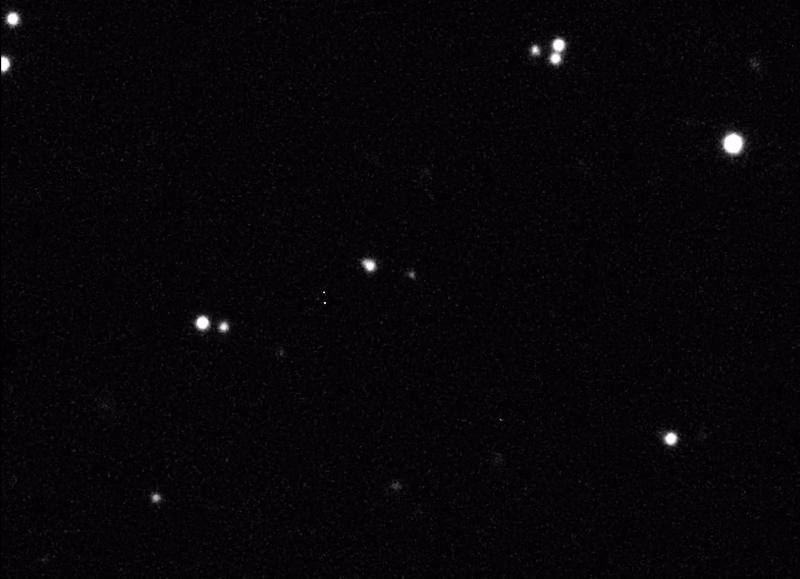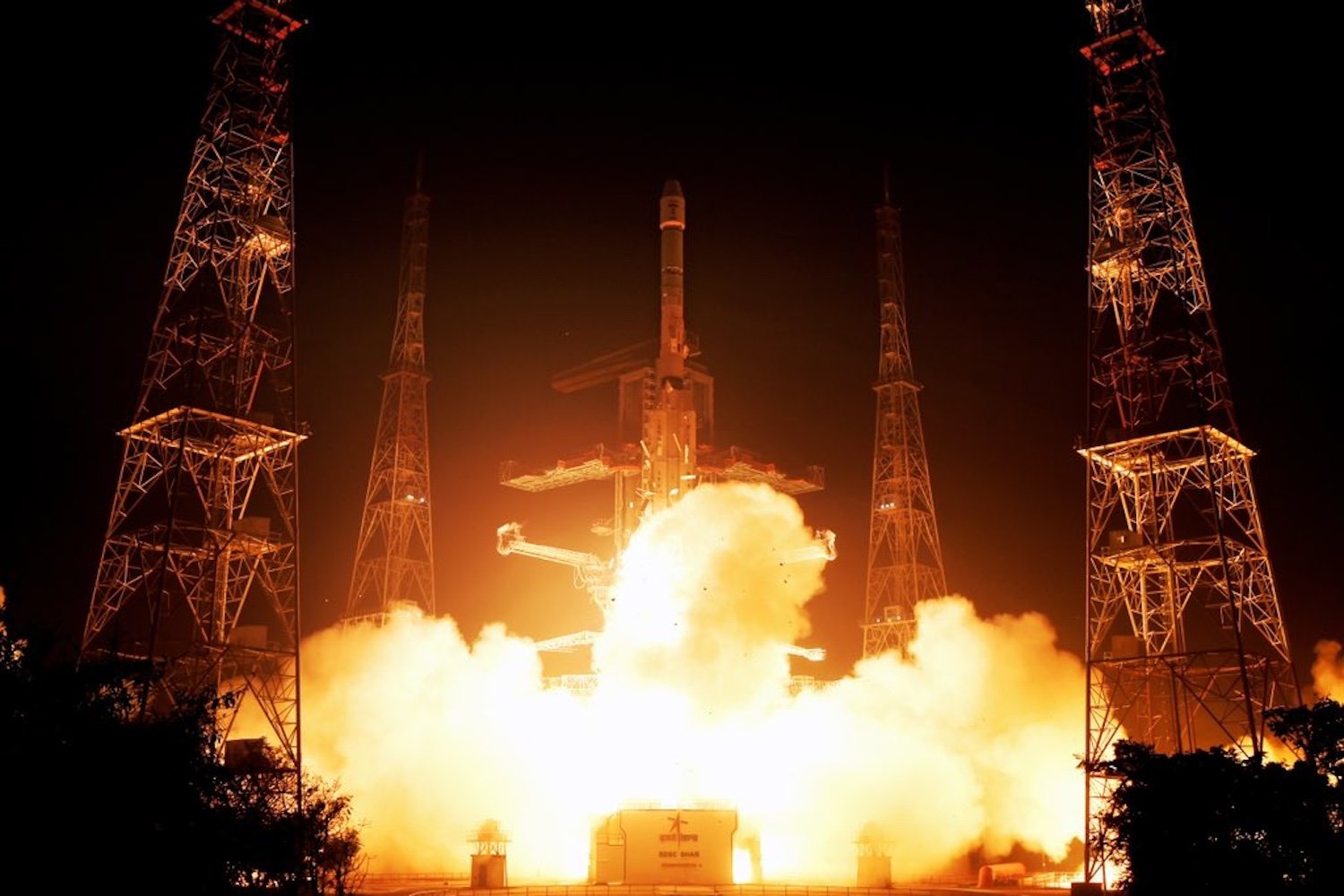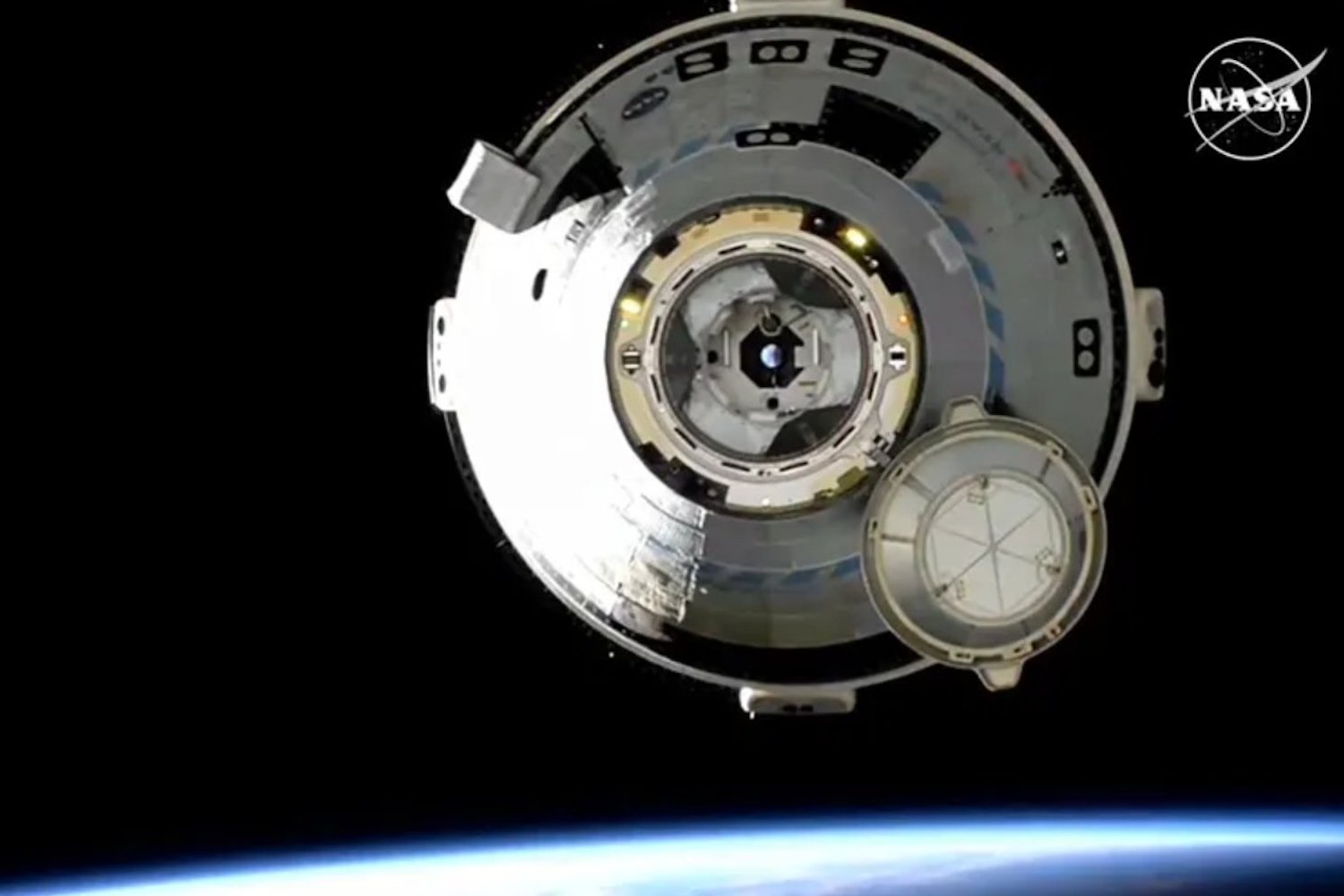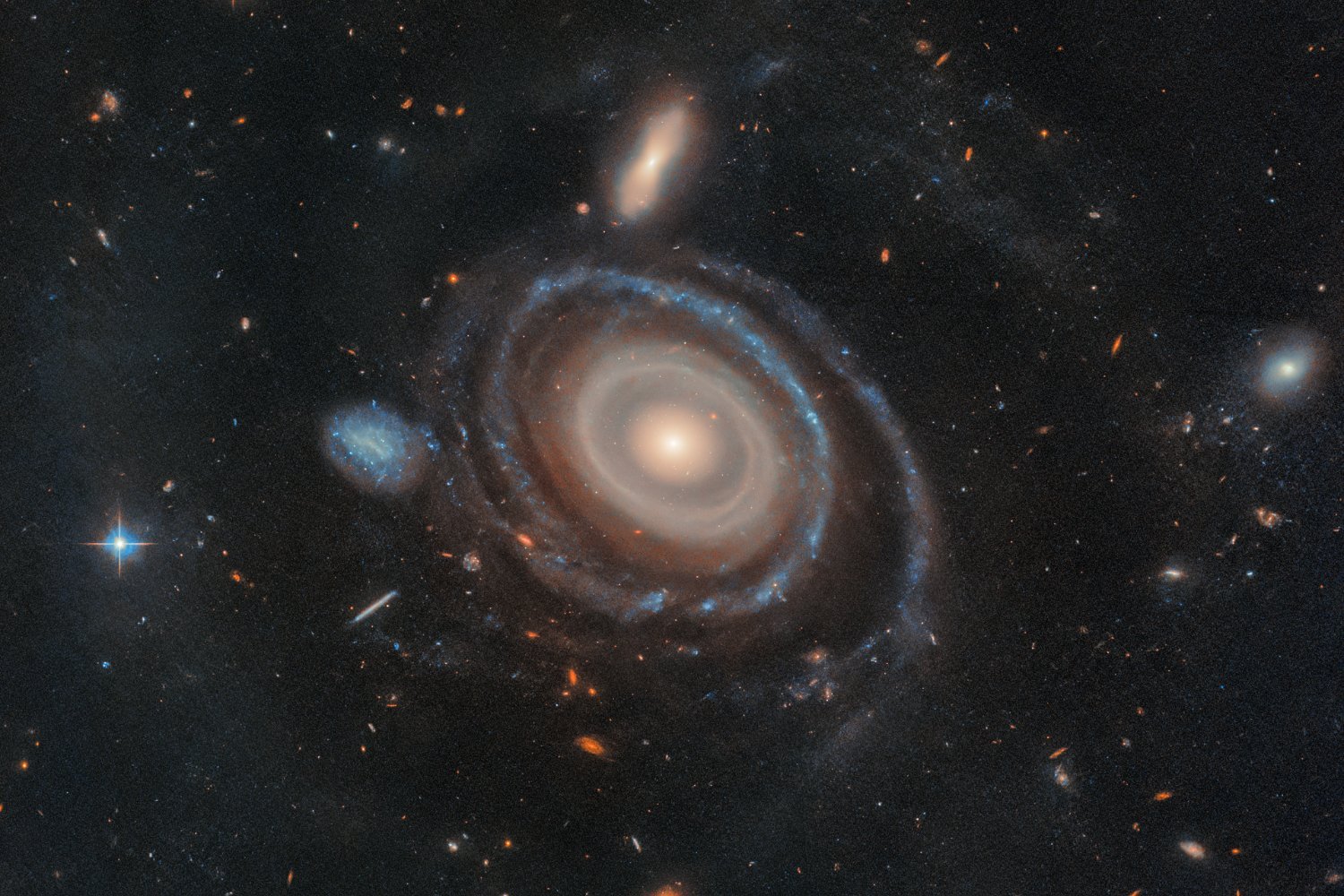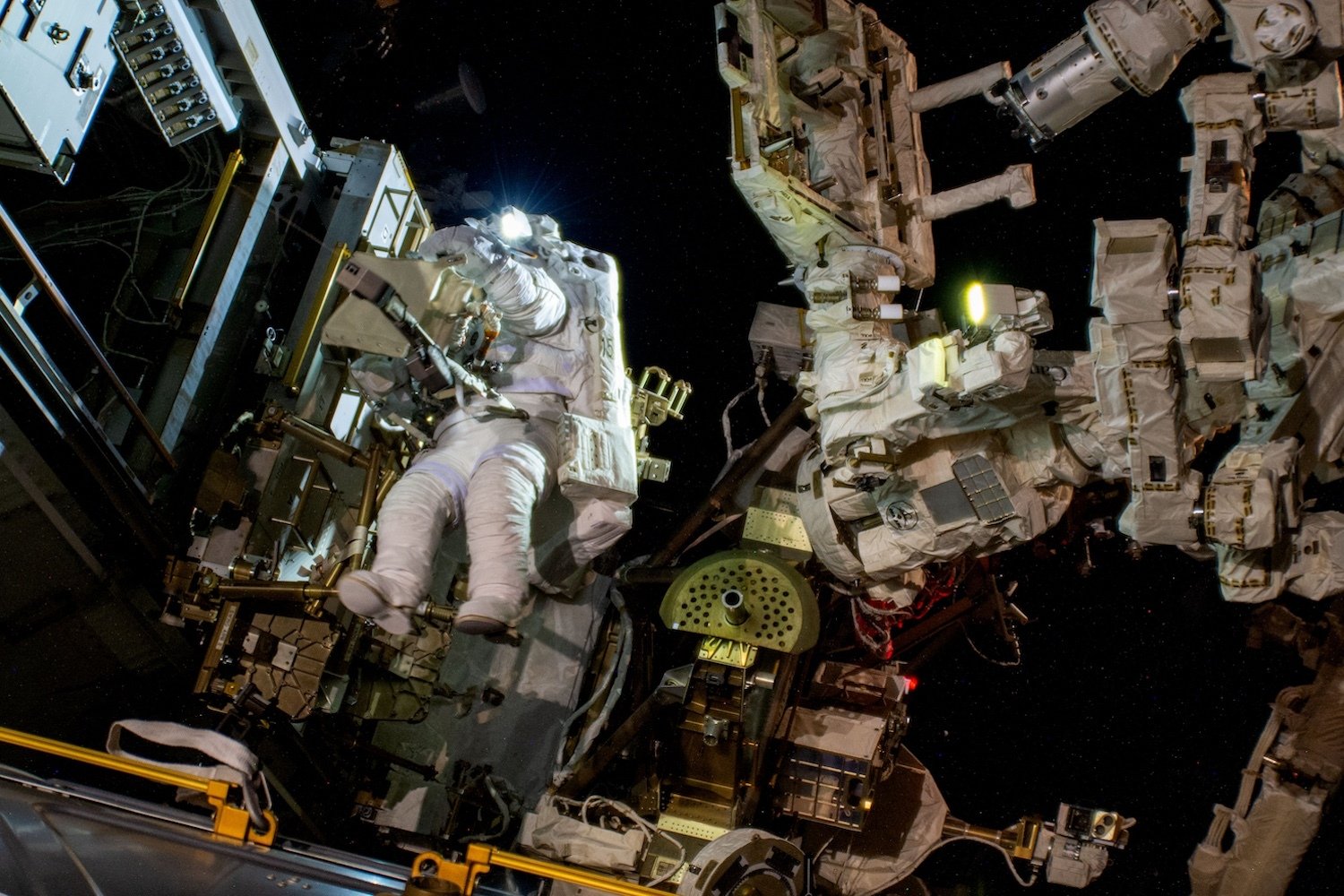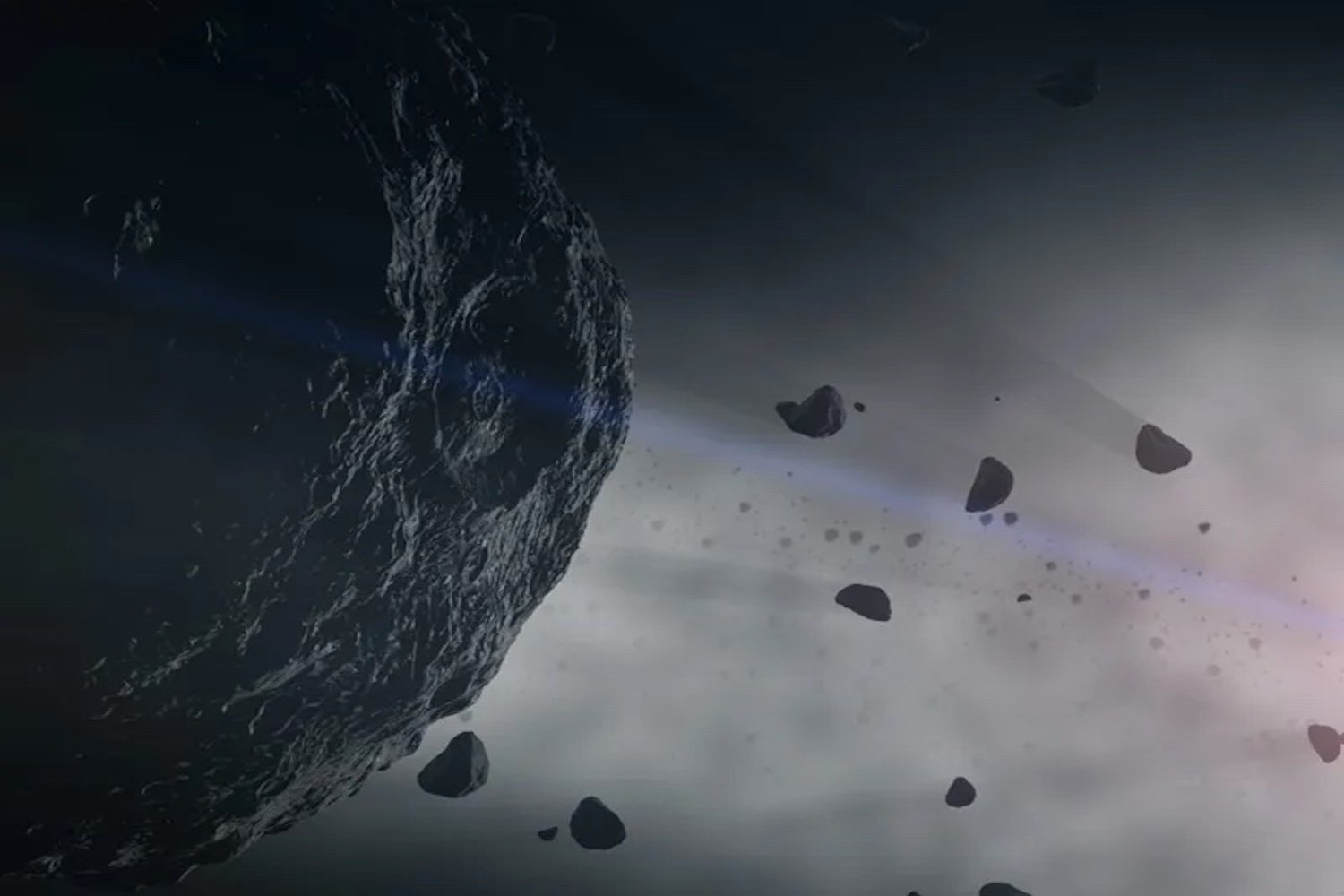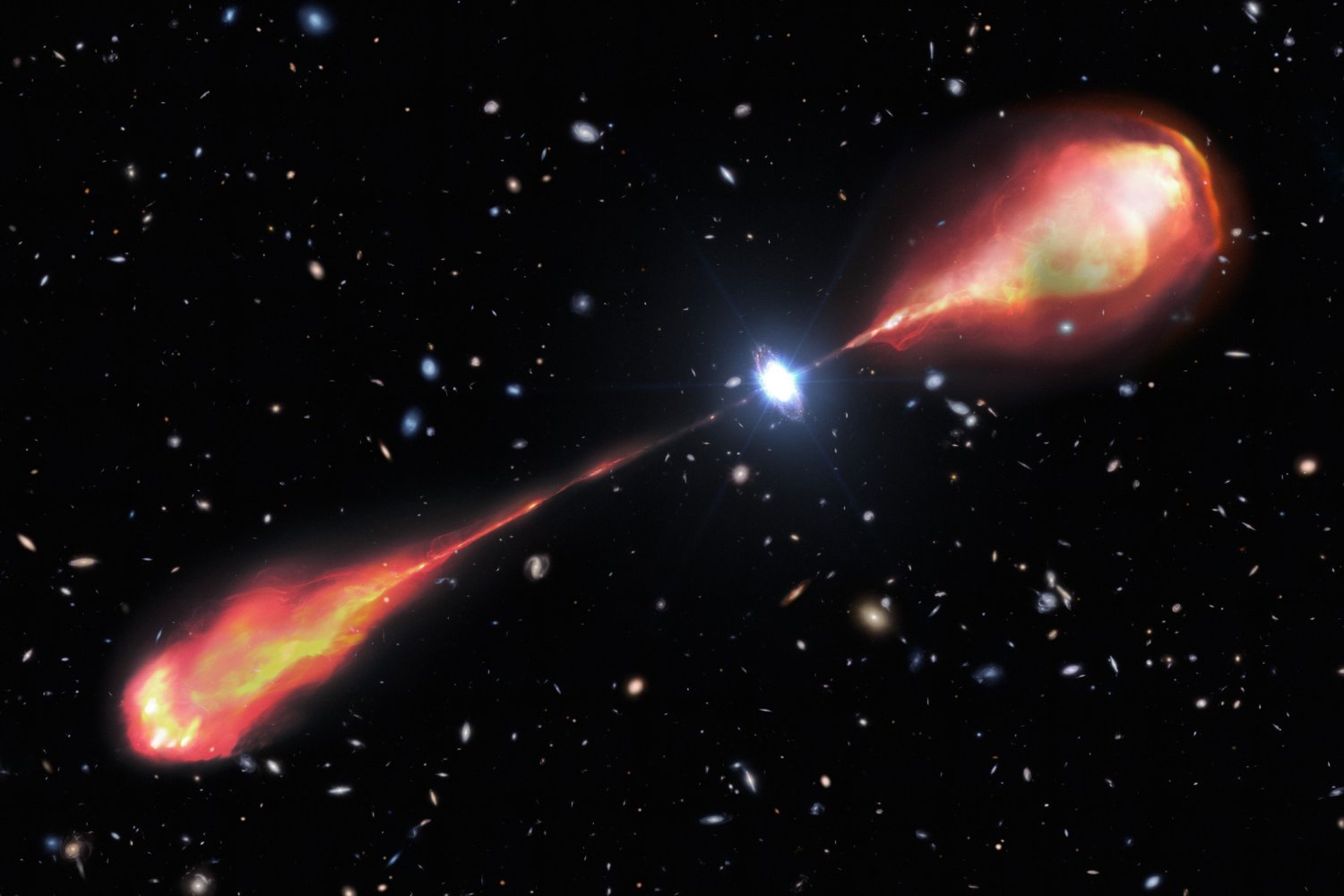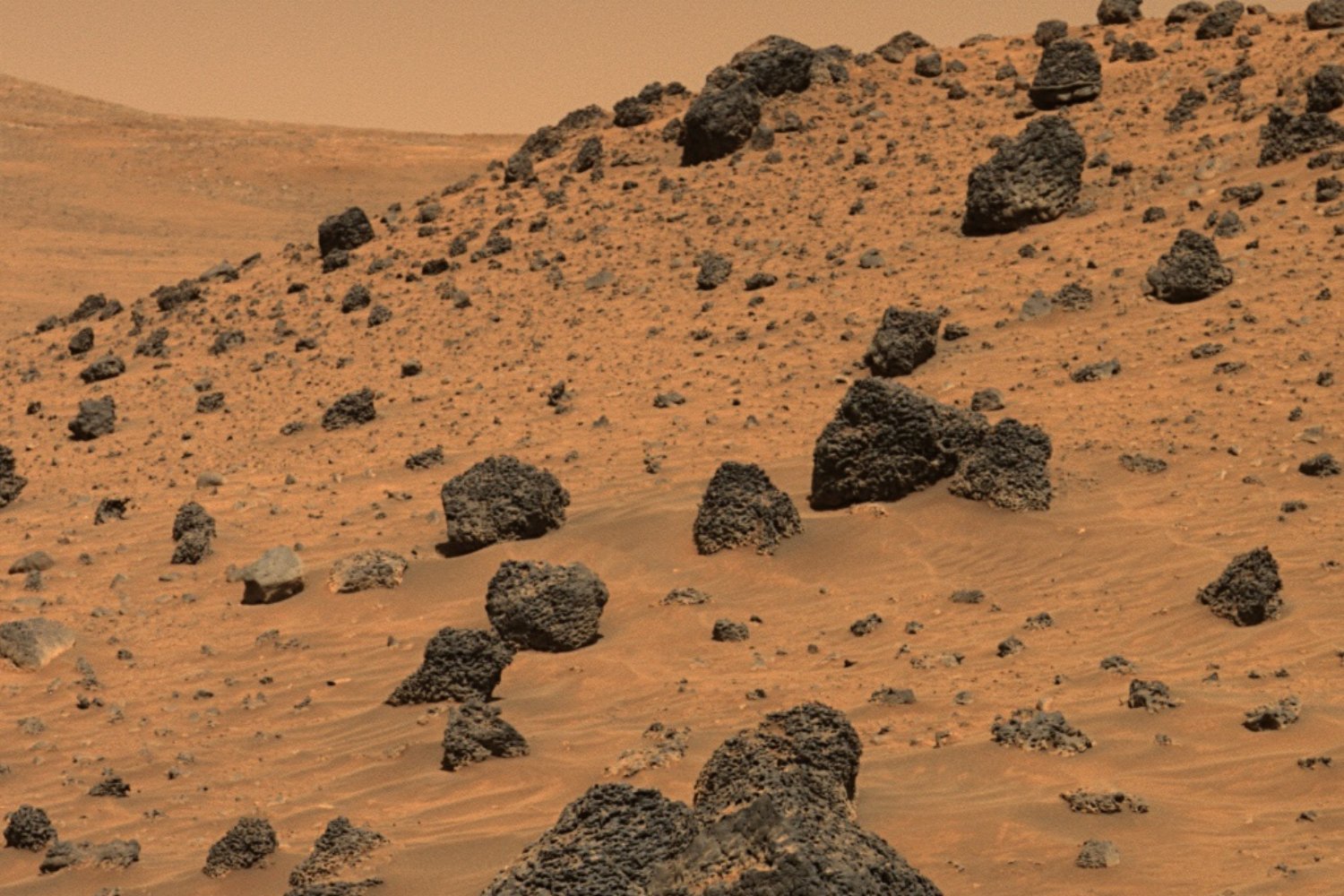The odds of an asteroid impacting Earth are often perceived as remote. However, recent early warning systems detected asteroid 2024 YR4, which has a 1-in-63 chance of colliding with our planet in 2032. This article explores what we know about this asteroid, its potential impact, and why, for now, there’s no immediate cause for alarm.
Discovering and Tracking 2024 YR4
NASA’s Asteroid Terrestrial-impact Last Alert System (ATLAS) in Chile first identified 2024 YR4 on December 27, 2024. The asteroid’s discovery was promptly reported to the Minor Planet Center, the central hub for positional data on small celestial bodies.
Based on reflected light, 2024 YR4 is estimated to be between 130 and 300 feet wide (40 to 90 meters). Currently, it’s moving away from Earth at 8.24 miles per second (13.26 kilometers per second).
NASA’s Center for Near-Earth Object Studies (CNEOS) projects that 2024 YR4 could potentially impact Earth six times between 2032 and 2071, with the highest probability occurring on December 22, 2032. The likelihood of impact decreases with each subsequent pass. Paul Chodas, Director of CNEOS, explained that the asteroid is becoming increasingly faint as it moves further from the Sun, making observation more challenging.
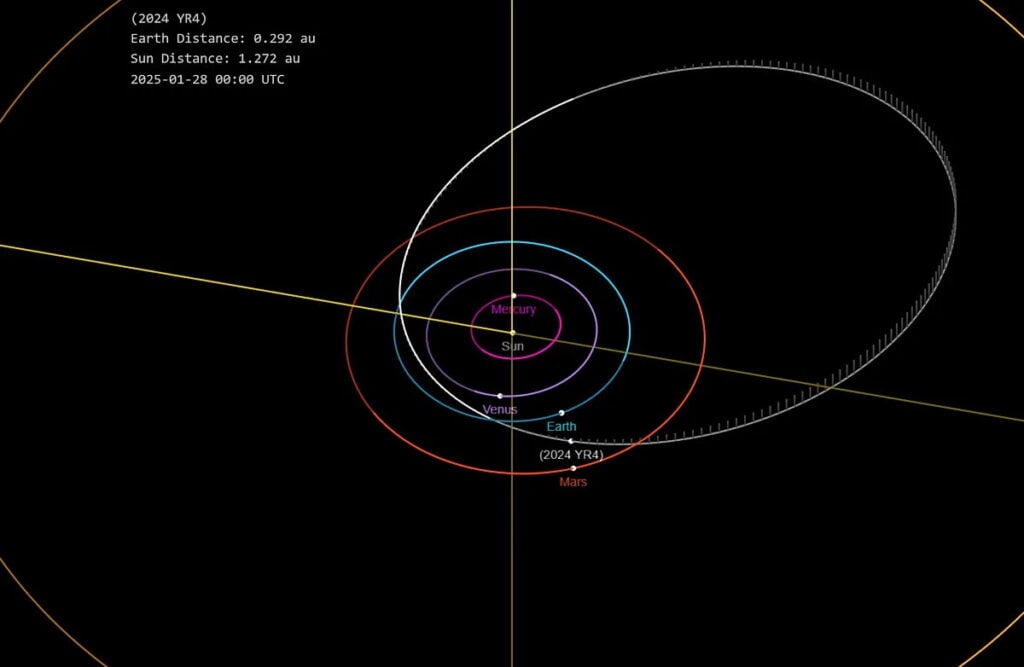 2024 YR4’s orbit relative to Earth and surrounding planets.
2024 YR4’s orbit relative to Earth and surrounding planets.
According to the International Asteroid Warning Network, the potential impact corridor for 2024 YR4 spans across the eastern Pacific Ocean, northern South America, the Atlantic Ocean, Africa, the Arabian Sea, and South Asia.
The Prevalence of Potentially Hazardous Asteroids
NASA classifies asteroids as potentially hazardous if they measure between 100 and 165 feet (30 to 50 meters) in diameter and their orbit brings them within 5 million miles (8 million km) of Earth’s orbit. However, collisions with Earth are rare. The impact of an asteroid depends significantly on its size and angle of entry, ranging from bright fireballs (bolides) that explode in the atmosphere to catastrophic events with global consequences.
Earth is constantly bombarded by space dust, accumulating around 5,200 tons annually. This goes unnoticed due to the minuscule size of the particles. The size of 2024 YR4 is a crucial factor in determining the potential damage upon impact, but its exact mass is currently unknown.
Several systems, including the Catalina Sky Survey and the Lincoln Near-Earth Asteroid Research (LINEAR) program, continuously monitor near-Earth objects (NEOs), including potentially hazardous asteroids. Other telescopes and observatories also contribute to this crucial surveillance effort.
Calculating Asteroid Impact Probabilities
NASA’s Sentry Impact Risk Table, managed by CNEOS, constantly recalculates the impact probabilities of NEOs over the next century. 2024 YR4 currently tops this list with a cumulative impact probability of 1-in-63 (1.58%), meaning a 98.4% chance of a miss.
To put this in perspective, statistician Lucas Janson explains that the odds are similar to flipping a coin six times and getting heads every time. While the probability is relatively low, it warrants attention.
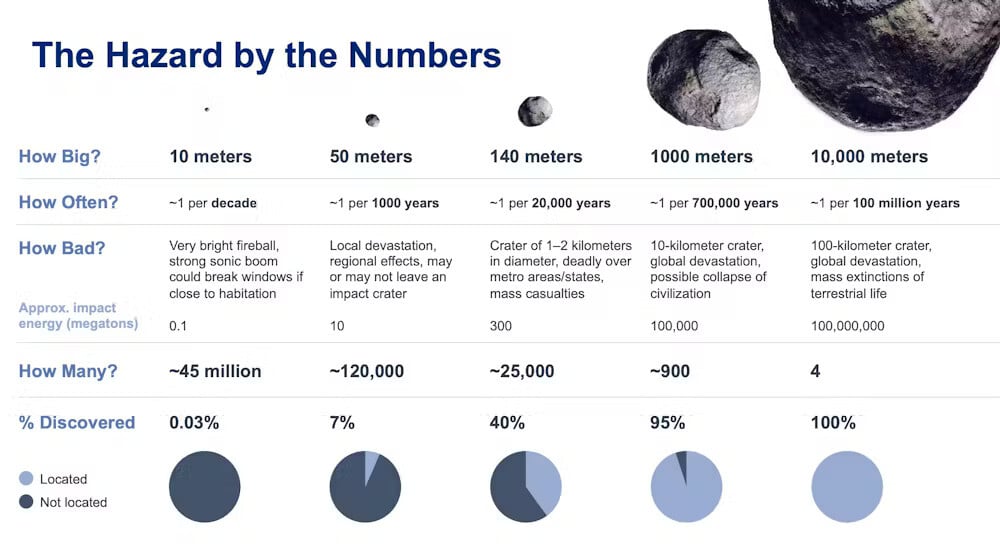 A graphic showing the damage caused by asteroids of different sizes.
A graphic showing the damage caused by asteroids of different sizes.
Measuring Asteroid Threat Levels
The Palermo Technical Impact Hazard Scale compares the likelihood of a potential impact to the average risk posed by similar-sized objects. This scale helps scientists prioritize the most significant threats. Distinct from the Palermo scale, the Torino Impact Hazard Scale, a color-coded scale from 0 to 10, indicates the severity of an asteroid threat. 2024 YR4 is currently classified as a 3 on the Torino scale, meaning it merits attention but is likely to be downgraded with further observations.
As Bruce Betts, Chief Scientist at the Planetary Society, explains, impact probabilities tend to fluctuate as more data becomes available. Initial observations often lead to higher probabilities, which then decrease as the asteroid’s trajectory is refined.
Potential Impact Scenario and Mitigation Efforts
While a 2024 YR4 impact wouldn’t trigger a global catastrophe like the dinosaur-killing asteroid, it could still cause significant damage. The estimated energy release, comparable to the 1908 Tunguska event, would depend on the asteroid’s size.
CNEOS provides hypothetical impact scenarios to help scientists prepare for potential asteroid threats. These simulations are crucial for developing effective response strategies.
Other potentially hazardous asteroids, like 99942 Apophis, are also being monitored. Apophis, significantly larger than 2024 YR4, will pass by Earth in 2029. While initially considered a potential threat, updated calculations indicate no risk for at least a century.
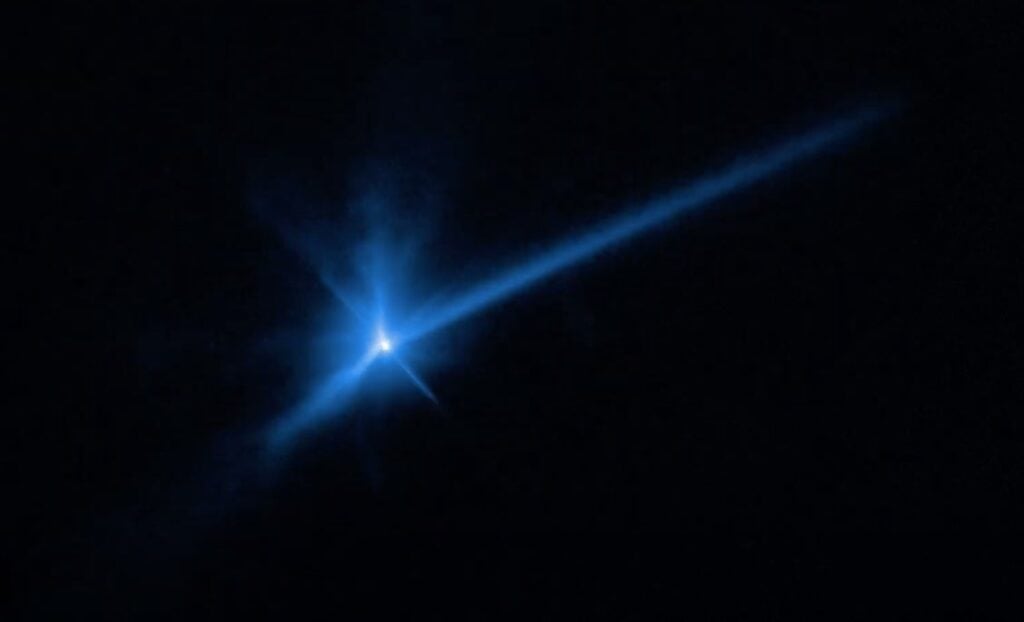 Ejecta streaming from Dimorphos about a day after the DART impact.
Ejecta streaming from Dimorphos about a day after the DART impact.
A 2028 flyby of 2024 YR4 will provide scientists with a valuable opportunity to gather more data and refine its trajectory.
NASA’s DART mission demonstrated the ability to deflect an asteroid’s path, offering a potential defense against future threats. Continuous monitoring and further research are essential for mitigating the risks posed by asteroids. Early detection and accurate trajectory predictions are crucial for implementing effective planetary defense strategies. As Paul Chodas emphasizes, vigilance and continued observation are key to ensuring Earth’s safety.



